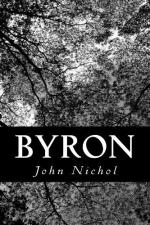Two grandsons of Sir Robert have a more substantial fame, having served with distinction in the wars of Edward I. The elder of these was governor of the city of York. Some members of his family fought at Cressy, and one of his sons, Sir John, was knighted by Edward iii. at the siege of Calais. Descending through the other, Sir Richard, we come to another Sir John, knighted by Richmond, afterwards Henry VII., on his landing at Milford. He fought, with his kin, on the field of Bosworth, and dying without issue, left the estates to his brother, Sir Nicholas, knighted in 1502, at the marriage of Prince Arthur. The son of Sir Nicholas, known as “little Sir John of the great beard,” appears to have been a favourite of Henry VIII., who made him Steward of Manchester and Lieutenant of Sherwood, and on the dissolution of the monasteries presented him with the Priory of Newstead, the rents of which were equivalent to about 4000l. of our money. Sir John, who stepped into the Abbey in 1540, married twice, and the premature appearance of a son by the second wife—widow of Sir George Halgh—brought the bar sinister of which so much has been made. No indication of this fact, however, appears in the family arms, and it is doubtful if the poet was aware of a reproach which in any case does not touch his descent. The “filius naturalis,” John Byron of Clayton, inherited by deed of gift, and was knighted by Queen Elizabeth in 1579. His descendants were prominent as staunch Royalists during the whole period of the Civil Wars. At Edgehill there were seven Byrons on the field.
On Marston, with Rupert ’gainst
traitors contending,
Four brothers enrich’d with their
blood the bleak field.
Sir Nicholas, one of the seven, is extolled as “a person of great affability and dexterity, as well as martial knowledge, which gave great life to the designs of the well affected.” He was taken prisoner by the Parliament while acting as governor of Chester. Under his nephew, Sir John, Newstead is said to have been besieged and taken; but the knight escaped, in the words of the poet—never a Radical at heart—a “protecting genius,
For nobler combats here reserved his life,
To lead the band where godlike Falkland
foil.”
Clarendon, indeed, informs us, that on the morning before the battle, Falkland, “very cheerful, as always upon action, put himself into the first rank of the Lord Byron’s regiment.” This slightly antedates his title. The first battle of Newbury was fought on September, 1643. For his services there, and at a previous royal victory, over Waller in July, Sir John was, on October 24th of the same year, created Baron of Rochdale, and so became the first Peer of the family.




